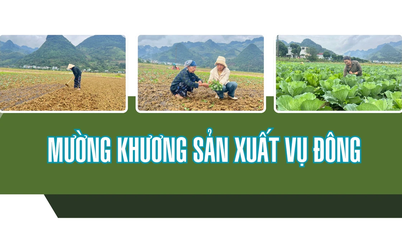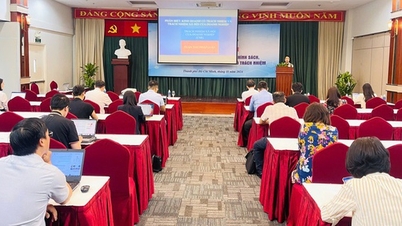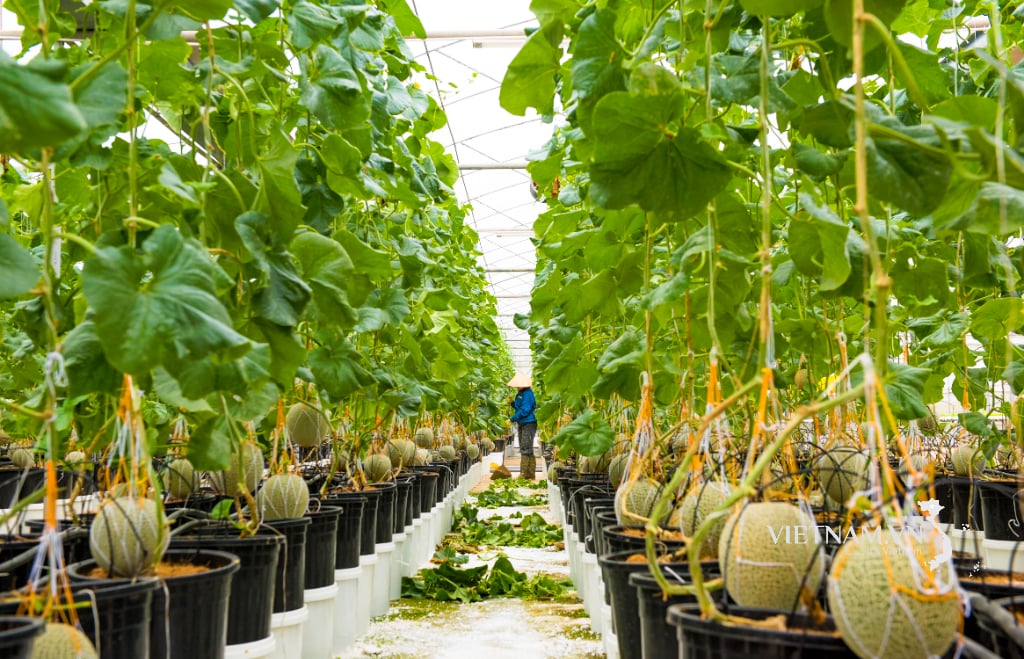*Domestic pepper prices remain around 145,000 - 147,000 VND/kg, unchanged from yesterday, down 500 - 1,000 VND/kg from last week.
Specifically, Dak Lak and Lam Dong are currently purchasing at 147,000 VND/kg, down 1,000 VND/kg; Dong Nai is at 145,000 VND/kg; while Gia Lai and Ho Chi Minh City both recorded 145,000 VND/kg, down 500 VND/kg compared to last week.

Domestic pepper prices remain unchanged compared to yesterday. Illustration photo: kinhtedothi.vn
According to purchasing businesses, the domestic pepper market has been moving sideways within a narrow range for over a month, as export demand has not increased significantly.
Supply among people is still available, but selling pressure is not great, as pepper growers continue to hoard goods, expecting prices to recover when entering the year-end consumption season.
According to the International Pepper Community (IPC), except for Indonesia which recorded a sharp decrease, pepper prices in other major producing countries remained almost flat last week.
Indonesian black pepper prices fell 1.41%, or $102 per ton, to $7,111 per ton. Brazilian ASTA 570 black pepper prices remained stable at $6,100 per ton, while Malaysian prices remained at $9,200 per ton. Vietnamese black pepper export prices remained unchanged from last week at $6,400-$6,600 per ton for 500g/l and 550g/l grades.
Muntok white pepper (Indonesia) decreased sharply by 3.13% (315 USD/ton) to 9,749 USD/ton, while Malaysia and Vietnam remained at 12,300 USD/ton and 9,050 USD/ton, respectively.
Global pepper prices are in a period of low volatility, reflecting weak demand and cautious buyer sentiment, Harris Spice reported.
At the same time, inventories are still concentrated mainly in the hands of farmers and traders with strong financial potential, who do not want to sell at low prices, making the actual trading volume in the market not high.
In Vietnam, many pepper growing areas are still experiencing scattered and prolonged rains, especially in the Central and Central Highlands regions. Storm Kalmaegi last week brought heavy rain to key growing areas, causing uneven care and fruiting. However, experts say high humidity helps plants grow better, but may affect the yield of the next crop.
*Coffee prices in the domestic market increased sharply, a positive signal at the weekend.
In the Central Highlands region, prices increased sharply from 2,300 - 2,700 VND/kg compared to yesterday, bringing the transaction level to 118,000 - 119,500 VND/kg, the highest price range in nearly 3 weeks.
Specifically, in Lam Dong, it increased by 2,300 VND/kg, trading at 118,000 VND/kg. In Dak Lak , coffee prices increased sharply by 2,700 VND/kg, to 119,500 VND/kg.
In Lam Dong, it increased by 2,500 VND/kg, trading at 119,500 VND/kg. In Gia Lai , coffee prices increased by 2,300 VND/kg, to 118,700 VND/kg.

According to purchasing businesses, the sharp increase in coffee prices at the end of the week reflects the optimistic sentiment from the international market, while domestic supply is gradually stabilizing after a long period of rain. In addition, the damage from storm Kalmaegi in the Central Highlands, especially Dak Lak, was confirmed to be not serious, helping farmers feel secure in harvesting.
Coffee is currently one of the four main agricultural export products of Vietnam, with a cultivated area of about 730,000 hectares and an output of 1.8 million tons/year.
According to the Ministry of Agriculture and Environment, Vietnam's coffee productivity currently reaches 3 tons of beans/ha. In the 2024-2025 crop year, coffee export turnover will reach 8.4 billion USD, up 55.5% over the previous crop year, with an output of about 1.5 million tons.
Coffee is the main livelihood of more than 600,000 farming households, creating jobs for about 2 million workers and making an important contribution to the Central Highlands economy. The increase in export value in the context of adverse weather shows the good resilience and increasing competitiveness of the industry.
On the London exchange (ICE Futures Europe), the price of Robusta futures contract for January 2026 was at 4,648 USD/ton, up 2.6% (118 USD/ton). The contract for March 2026 increased 2.45% (109 USD/ton), reaching 4,567 USD/ton.
In New York (ICE Futures US), the price of Arabica for delivery in December 2025 increased by 2.79% (11.05 US cents/pound), to 407.8 US cents/pound, and the price for delivery in March 2026 increased by 1.79% (6.8 US cents/pound), reaching 385.85 US cents/pound.
According to data from Artis Trading, world coffee prices increased by an average of 2-4% last week, reflecting the buying trend of hedge funds, amid concerns about limited supply due to natural disasters and sharp declines in inventories.
Typhoon Kalmaegi (storm No. 13) has caused heavy rains in some coffee growing areas in the Central Highlands, but according to Bloomberg, Dak Lak province has avoided serious damage.
In addition, Artis Trading forecasts that Vietnam’s coffee output in the 2025-2026 crop year could increase by 9.3% compared to the previous year, thanks to favorable weather and improved crop care techniques. This is an important factor helping Vietnam maintain its role as the world’s No. 1 Robusta producer, while stabilizing global supply during volatile times.
Source: People's Army Newspaper
Source: https://htv.com.vn/gia-nong-san-hom-nay-10-11-gia-ca-phe-tang-manh-222251110092524038.htm

























































































![Dong Nai OCOP transition: [Article 3] Linking tourism with OCOP product consumption](https://vphoto.vietnam.vn/thumb/402x226/vietnam/resource/IMAGE/2025/11/10/1762739199309_1324-2740-7_n-162543_981.jpeg)













Comment (0)